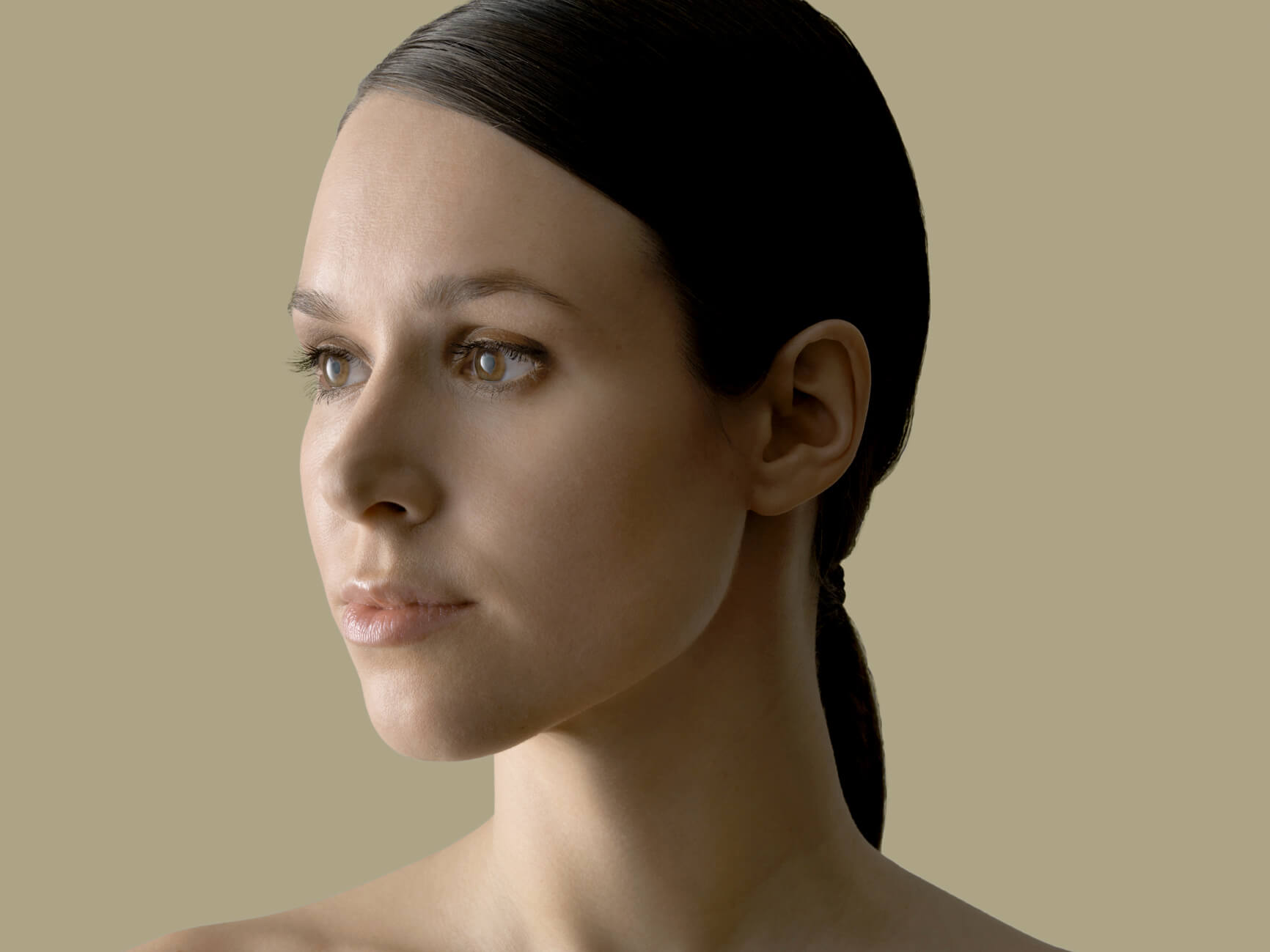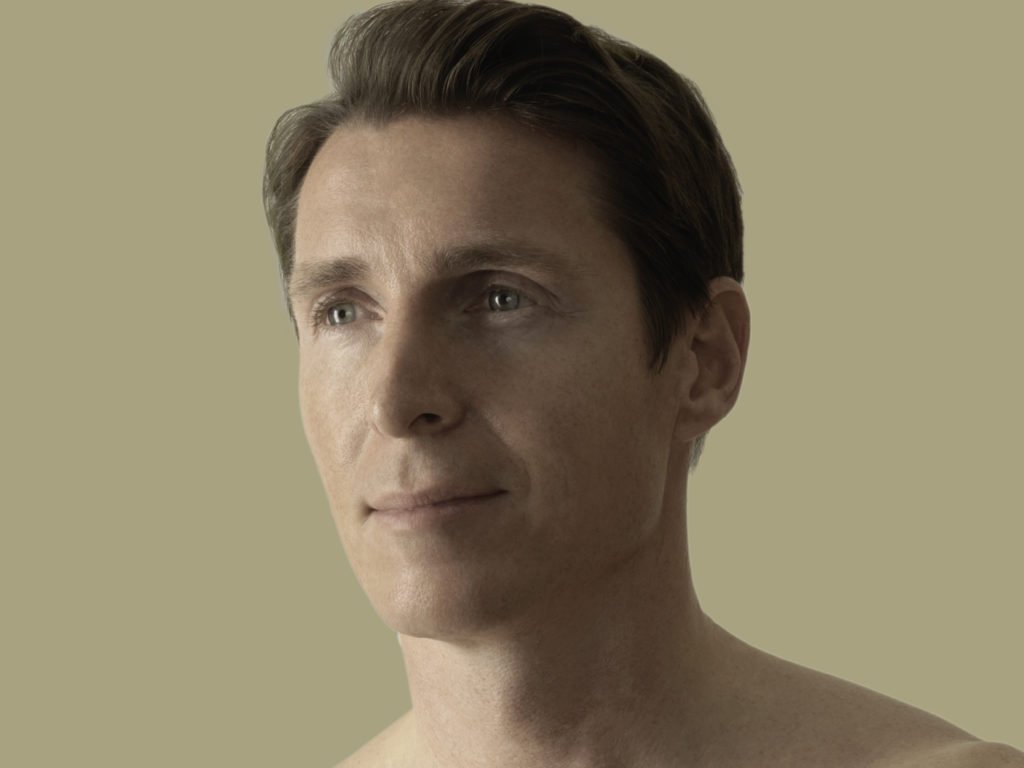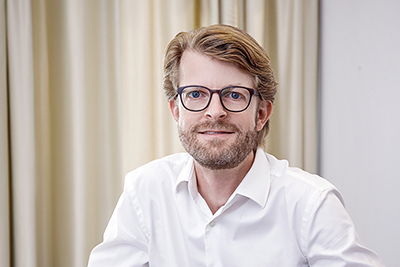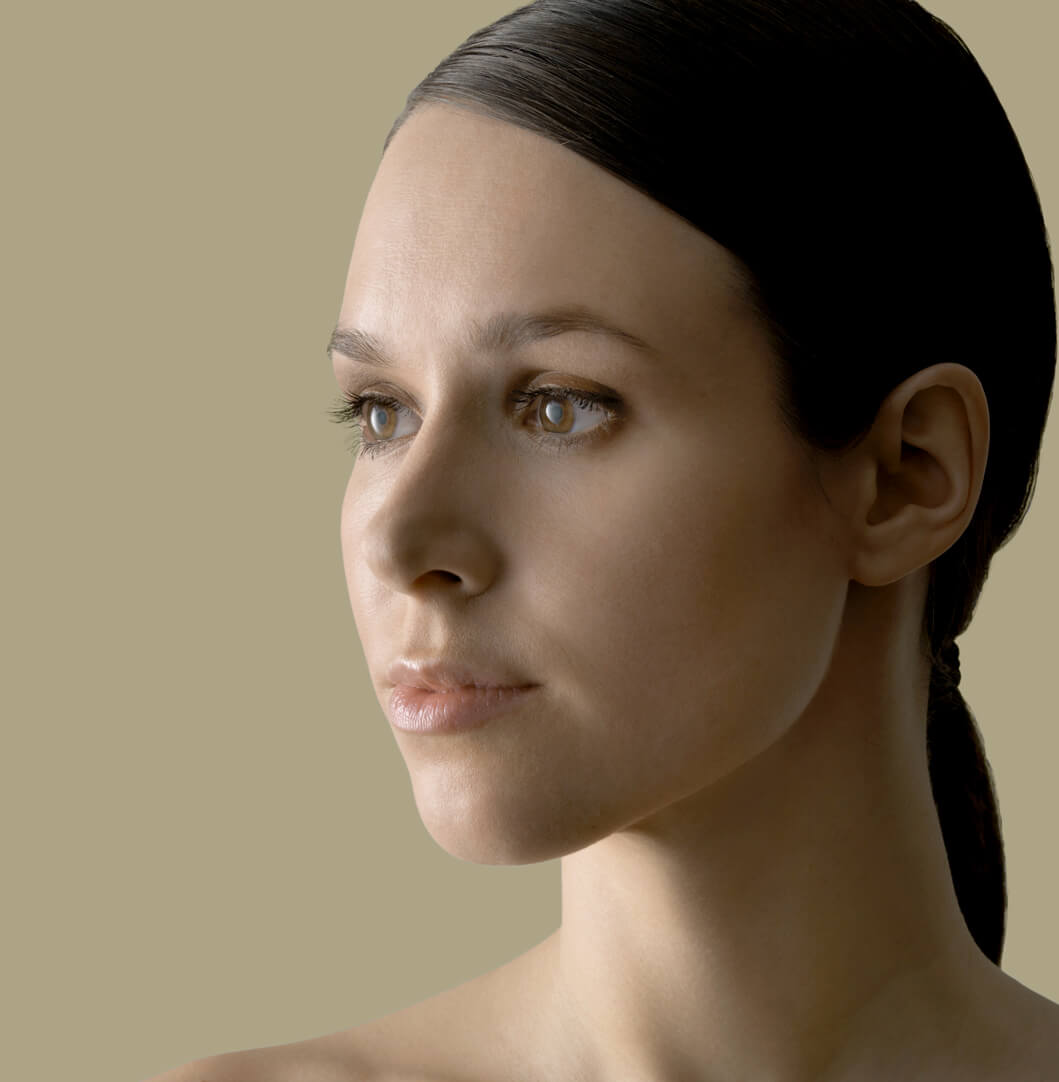
Lipofilling has a wide range of applications in aesthetic surgery. Here, the body’s own fat tissue is used to shape different parts of the body or to replace lost volume. The autologous fat injection is a relatively safe procedure that can achieve long-lasting results. It is often combined with other methods such as skin tightening (lifting) procedures.
Especially in cosmetic facial surgery, lipofilling has been firmly established as an isolated or combined treatment and, in addition to the added volume, seems to have a positive effect on skin quality.
The autologous fat injection involves the removal of fat tissue from regions of the body with an excess of adipose tissue, the preparation or purification of adipose tissue by various methods (e.g. sedimentation, centrifugation) and the injection of the prepared adipose tissue with fine cannulas into the desired regions. Repeated treatments may be worthwhile in order to achieve optimum results.

Considerations
When to consider lipofilling:
- Patients who have depleted or sunken areas in certain parts of their face, where wrinkles are created.
- Deep nasolabial folds can be filled with your own fatty deposits and can balance facial asymmetries.
- Age-related volume deficiencies can be remedied by autologous fat injections.
- Common areas of treatment are: temples, cheeks, nasolabial folds, marionette lines, lips, and chin.
- As a side effect, there is an overall improvement in skin quality. Therefore, lipofilling can also be used for the treatment of scars, for example, after acne.
Patients should be in good health. Any bleeding disorder or tendency for increased or prolonged swelling should be communicated to the surgeon in order to be able to weigh up risks versus benefits. Each person’s anatomy and proportions are unique and the decision to undergo lipofilling depends on each individual and their goals.
During the aging process, the amount and distribution of adipose tissue changes in the face and neck in different ways. Fat subsides under the forces of gravity, increases in certain areas and diminishes in other areas. The regression of fatty tissue on the temples, cheeks and lips cannot be corrected by a facelift alone. Under these circumstances, lipofilling is used either alone or in combination with other measures to replace lost volume in order to achieve a natural rejuvenation of the face.
The transfer of adipose tissue from another healthy body region is also effective for patients who suffer from a disease-related atrophy of adipose tissue in the face (e.g. HIV, progressive hemifacial atrophy [Syn. Parry Romberg Syndrome]).
Consultation
A prerequisite to a successful operation is careful planning. This starts with a personal consultation at the AARE KLINIK.
- Communication of wishes and expectations ascertain what you would like to improve.
- Explanation of the possibilities, scope and limitations of the operation.
Examination:
- Medical history is taken.
- Physical examination is performed.
- Digital photos are taken.
- Bone structure and soft tissue are assessed.
- Thickness, texture and elasticity of skin is tested.
- Based on this an individual treatment plan is drawn up and goals of the operation are discussed and defined.
- Sometimes autologous fat injections is only one aspect of an overall treatment concept, for example as part of a blepharoplasty or facelift.
- It often makes sense to combine several treatment methods to achieve the best possible result.
- A joint individual treatment plan is set up, including all important aspects of the operation.
- Risks and complications are discussed.
- Agreed treatment is documented on a planning sheet.
To plan the operation and to make a risk assessment we require:
- Full medical history (pre-existing conditions and previous surgery).
- Current diseases (high blood pressure, diabetes, thyroid dysfunction).
- Allergies or aversion to medications.
- Any important medical reports.
- Please bring any important medical information along to the consultation.
Procedure
Foremost, autologous fat injection requires the availability of excess adipose tissue elsewhere on your body (e.g. tummy, hips, thighs). Fat is removed under sterile conditions by liposuction that is carried out with special atraumatic cannulas in order not to damage the fat cells. Next, the adipose tissue is prepared for injection. The aspirated fat tissue is purified from blood and connective tissue components by various methods (e.g. rinsing, sedimentation, centrifugation) resulting in a homogenous gel, composed of fine fat droplet that can be injected with fine cannulas into the desired regions. To ensure optimal healing of the transferred fat cells, small fat droplets are distributed uniformly in tiny channels throughout the recipient tissue. Following fat injection, the tissue can be contoured by light massage. Depending on the injected region post-treatment is performed with special bandages and compression garments.
Risks
The injection or transplantation of one’s own (autologous) fat tissue is a widely used treatment that enjoys increasing popularity. Autologous fat tissue is an ideal filler in many regions of the body as it is safe and does not carry the risk of foreign materials, like collagen, hyaluronic acid, or silicone. Adipose tissue transfer is able to produce natural, long-lasting results and is particularly safe to use in the face. The body’s own fat tissue can be used for contour enhancement, scar correction, filling of defects, and the rejuvenation of the face, hands and other areas.
Swelling and bruising are the most common side effects of autologous fat injections, but resolve within 2–3 weeks. Temporary numbness may occur in the treated areas. Slight asymmetry or unevenness will fade by itself once the swelling subsides. Due to the partial degradation of injected fat cells (30–70%) the desired volume may not be achieved with one fat transfer and further treatments may be required for an optimal result. The healing rate of adipose tissue depends on the blood supply in the recipient region and, thus, is usually higher in the face than the breasts, extremities or in scar tissue. Infections are rare, but pose a serious complication that can result in total loss of the injected fat, scarring or the creation of dimples in the skin, which might require surgery.
General risks from lipofilling include:
- Haematoma (bruising), bleeding and swelling
- Seroma (accumulation of wound fluid)
- Healing problems or infection
- Wound breakdown/dehiscence (separation of wound edges)
- Injury of nerves or vessels
- Numbness in area of operation (temporary or permanent)
- Circulatory problem of the skin (skin slough)
- Scars
- Slight asymmetry
- Unsatisfactory aesthetic result
- Secondary surgery
- Thrombosis or embolism
Overall a lipofilling is a safe procedure when undertaken by an experienced plastic surgeon and patients are mostly satisfied with the results. You can help to minimise the risks by following the advice of your surgeon.
Preparation
Our aim is to make the time before and after your surgery as comfortable as possible. By following a few recommendations you can support our care:
- To aid the healing process, avoid smoking for two weeks before and after the operation.
- Avoid medication that increases the risk of bleeding, like aspirin, non-steroidal anti-inflammatory drugs, as well as vitamins and homeopathic remedies for two weeks prior to the operation.
- Prior to lipofilling of the lips and perioral region you may have to perform a pre-treatment with special ointments, and possibly antivirals.
- Lipofilling is mostly performed as an outpatient procedure under local anaesthesia. If combined with more extensive procedures, such as a facelift, surgery may be performed under general anaesthesia. Make sure that you can be collected and cared for by someone for 24 hours after the procedure.
Day of surgery
Lipofilling is generally performed under local anaesthesia or twilight anaesthesia as an outpatient procedure. For extensive treatments or combined procedures (e.g. lipofilling with facelift) a general anaesthesia may be preferable.
- During surgery you will receive various medications for your wellbeing.
- Depending on individual cases and the length of operation, you will have a local anaesthesia, twilight anaesthesia or a general anaesthesia.
- For your safety, your heart rate, blood pressure, oxygen supply etc. are monitored during the operation.
- After a twilight or general anaesthesia, you will be taken to the recovery room, where you will have continued monitoring until you awaken and are able to get up.
- If you have only local anaesthesia you can leave the practice immediately after the surgery. After a twilight or general anaesthesia you are allowed to return home after a few hours.
- To reduce swelling and promote healing, special elastic bandages and compression garments are applied after the operation.
- The pain following a liposuction and lipofilling is usually mild. You can use mild pain relief that reduces swelling and can be continued for the first few days after surgery.
- After an outpatient procedure, you should be accompanied home by someone and cared for continuously for the first 24 hours.
- You will receive detailed instructions about what do to at home and which medication to take.
- Only take prescribed painkillers and avoid medication containing aspirin.
- You should not perform any strenuous activities or sports for several days after the procedure.
- After an outpatient procedure, you should have someone to care for you continuously for 24 hours after the surgery.
- We also offer the possibility for a short inpatient stay at the AARE KLINIK in a single room with a nurse if required.
After surgery
- It is important to realise that recovery time from an operation varies greatly for each individual.
- During the first days after lipofilling you should keep your head and upper body in a raised position and place moist gauze over the eyes to prevent swelling.
- However, cooling of the cheeks and neck with ice should be avoided, in order not to compromise skin circulation.
- You should not perform any strenuous activities or physical exercises (sports) for several days after the surgery.
- Only take prescribed pain medication and do not take medication like aspirin.
- During the first 2–5 days after the procedure, you might experience significant bruising and swelling of the facial skin. Bruising usually subsides within 10–14 days, while swelling may persist for several weeks.
- Typically you will be back on your feet a couple of days after surgery and be able to resume your daily activities.
- Bandages will be removed a few days after surgery, after which you can take showers again.
- Full baths and excessive heat, however, should be avoided for several weeks until swelling has subsided.
- If applicable, sutures are removed within a week.
- Due to the fact that the swelling of facial skin lasts longer, important appointments should be scheduled at the earliest 6 weeks after surgery.
- Swollen or bruised skin and fresh scars should be protected from UV radiation, in order to prevent increased pigmentation.
- After surgery you will be examined at the AARE KLINIK at regular intervals, so that the healing process can be assessed until the final surgical result is achieved.
Outcome
- The healing process is gradual and it will take several months before the surgical result can be fully determined.
- Small scars from the liposuction and lipofilling cannulas may be red, or appear discoloured but will fade with time and become barely visible.
- The result of lipofilling is usually long-lasting. The effect can be subtle or bold, depending on the desired result and injected fat volume.
- However, only a portion of the injected cells heals, while about 30-70% degrade. This can be remedied by further treatments.
- Both the individual aging process, as well as lifestyle and weight changes may have an impact on the long-term outcome and possibly whether another lipofilling is required at a later date.
Costs
Lipofilling is undertaken in order to improve appearance, making it an aesthetic procedure, in which case the costs have to be carried by the patient.
The cost of lipofilling vary significantly depending on the extend of the surgery and on where the procedure is performed (AARE KLINK or hospital). A more accurate cost estimate can therefore only be made after a personal consultation.
The overall costs are made up of:
- Surgical fee (including consultation and post-operative care)
- Anaesthesia fee
- Technical infrastructure costs (AARE KLINIK/hospital)
- Inpatient hospital costs
- Medication
- Compression garments
- Diagnostics (laboratory, ECG, scans, etc.)
Appointments for lipofilling with Dr. Scheufler in Bern
Before any facial surgery you should have a comprehensive consultation and additional examination. Only in this way can you be sure whether the type of surgery will lead to the result you expect. In addition, your consultation will give you a good impression of our experience in the field of lipofilling. Feel free to ask for before and after photos to get an idea of what the results look like.

PD Dr. Oliver Scheufler, board certified plastic, reconstructive and aesthetic surgeon and author of this website, is pleased to be at your service for a personal consultation. Besides his main occupation at the AARE KLINIK, Dr. Scheufler is also scientifically active and lectures at the University of Basel. He also was a visiting professor at Duke University (USA). Please do not hesitate to contact him if you wish a professional consultation!



